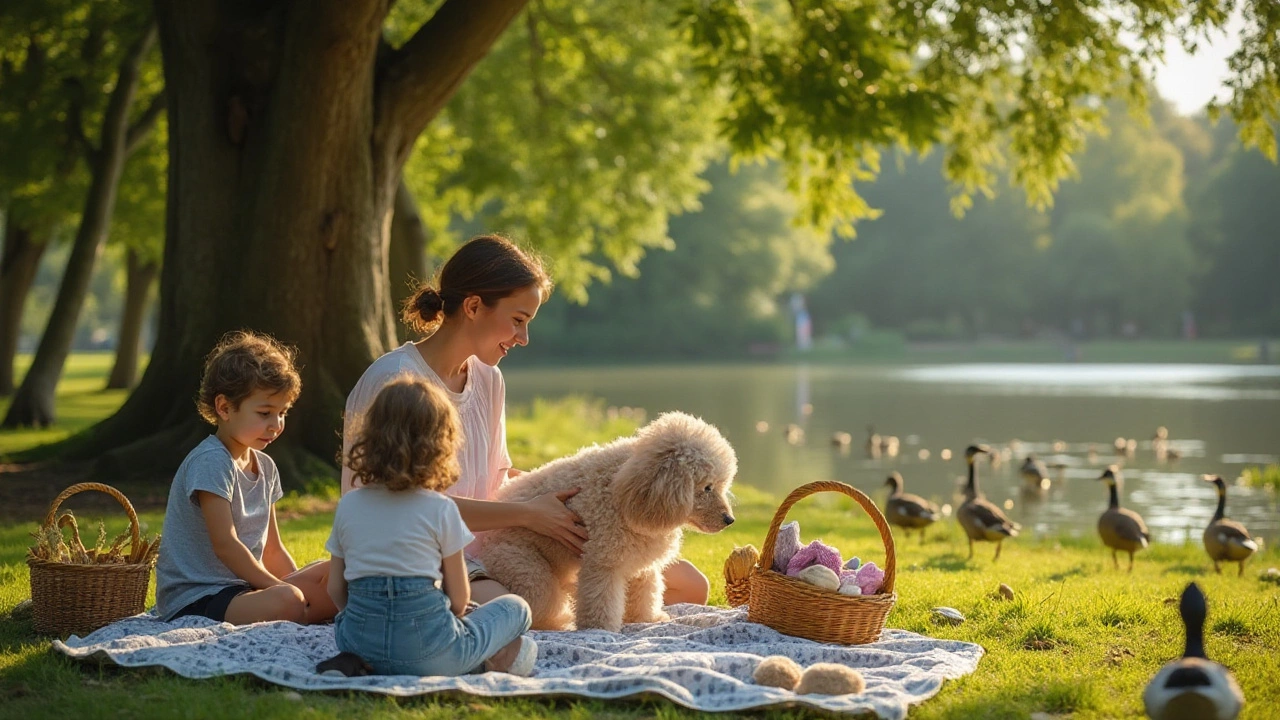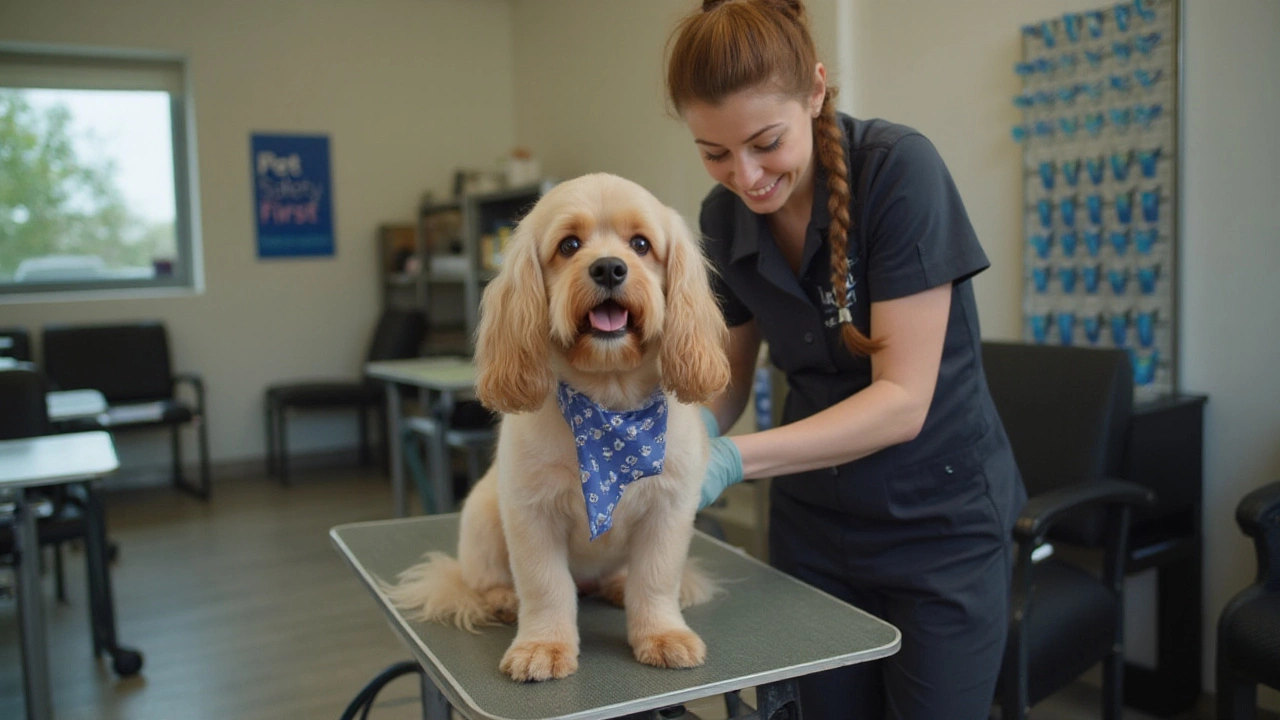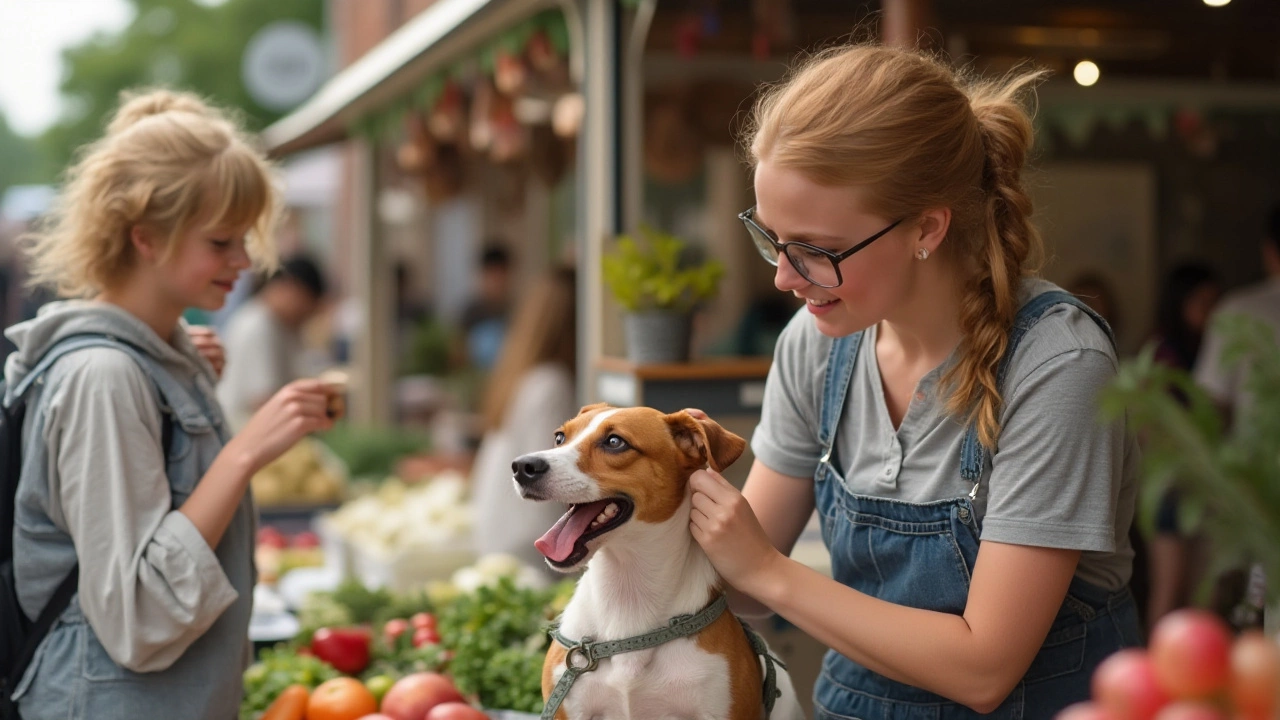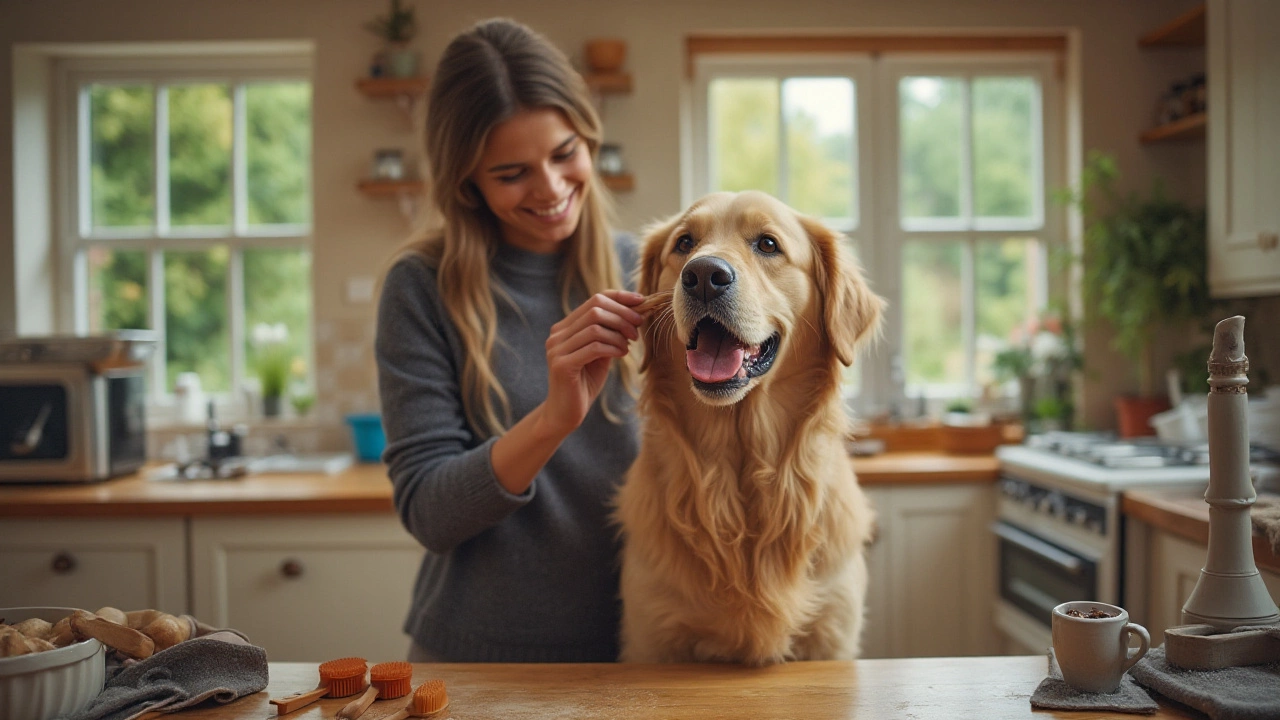Grooming is more than just a routine for our beloved dogs; it plays a pivotal role in keeping them healthy and happy. Yet, amidst the snipping scissors and whirling blow dryers, safety tends to be a pressing concern for many pet owners. How do we ensure that our furry friends are not just looking good but also feeling secure throughout the process?
Safety during grooming begins with understanding your dog's behavior and reactions. Each dog is unique, with differing levels of tolerance to grooming activities. Recognizing this individuality will help you tailor your approach, easing anxiety and fostering trust.
Equally important are the precautions and tools we employ during grooming. Having the right clippers, brushes, and shampoos can make a world of difference, not only in results but also in minimizing risks. Avoiding common mistakes, such as cutting nails too short or using the wrong comb, is crucial for a smooth, incident-free session.
Lastly, creating a safe environment involves not just physical preparations but also emotional ones. Adequate preparation and knowledge are the keys to transforming grooming time into a positive experience for you and your dog, strengthening the bond you share.
- Understanding Dog Behavior During Grooming
- Essential Safety Precautions and Tools
- Common Grooming Mistakes and How to Avoid Them
- Creating a Comfortable Grooming Environment
Understanding Dog Behavior During Grooming
Grooming time can either be a leisurely experience or a daunting task, largely depending on your dog’s temperament and the way they perceive these sessions. Recognizing signs of stress or discomfort is critical to improving your dog's grooming experience. Dogs communicate through body language, which is evident in various scenarios, including grooming. They might express their anxiety by whining, growling, or trying to escape. Being attentive to these signals is the first step in ensuring your dog’s experience remains positive and safe. Every dog owner should try to make grooming a comfortable and familiar routine for their companion.
Many dogs feel apprehensive during grooming due to unfamiliar sensations and noises. Electric clippers and hair dryers can be especially daunting. Dogs have more sensitive hearing and the buzzing of clippers can be overwhelming. Similarly, the sensation of brushes or tools touching sensitive areas might cause distress. Regularly acclimating your dog to grooming tools while they are calm can help. You can start by simply turning on the clippers from a distance, gradually bringing them closer as your dog seems more at ease. This helps them get accustomed to the sound without associating it immediately with grooming.
Developing a grooming routine not only involves the physical aspect but also psychological readiness. Conditioning your dog with simple commands and positive reinforcements encourages better cooperation. Using treats, verbal praises, or even a favorite toy can help associate grooming with pleasant outcomes. This positive association can foster a more relaxed and willing dog. On the flip side, forceful handling or rushing through the process can lead to anxiety, making future grooming sessions challenging.
Expert dog handler, Cesar Millan, emphasizes the importance of creating a calm and controlled environment.
"Understanding your dog's state of mind is the key to improving behavior," advises Millan. "When they trust you, grooming becomes a bonding moment rather than a battle."This connection and respect for your dog's boundaries are vital in grooming. Dogs, unlike humans, thrive on routine and predictability. Regular grooming can lessen their stress as they come to know what to expect each time.
Temperament can vary widely across breeds. It’s significant to recognize that breed traits might influence a dog’s reaction to grooming. For instance, some breeds are inherently more anxious, which means extra patience and time are needed. A strong understanding of behavioral tendencies allows you to tailor your approach effectively, making grooming sessions smoother and more enjoyable. In conclusion, knowing your dog and adapting grooming methods to their comfort can transform this routine task into an opportunity to strengthen your bond.

Essential Safety Precautions and Tools
To ensure your dog’s grooming experience is as safe and enjoyable as possible, it’s crucial to arm yourself with the right precautions and tools. The process begins with selecting the appropriate grooming equipment, which plays a pivotal role in minimizing the risk of accidents. One of the key tools in your arsenal should be a reliable set of clippers tailored specifically for pet grooming. This means seeking out clippers that offer various speed settings to accommodate different coat types and thicknesses, as well as those with safety guards to prevent nipping the skin. Alongside clippers, invest in a range of brushes designed to suit your dog’s coat—bristle brushes for short-haired breeds, slicker brushes for those with longer coats, and de-shedding tools for those that shed heavily.
Safety doesn’t stop at tools; the environment where you groom your dog also matters immensely. Keeping the grooming area clean and clutter-free reduces the likelihood of accidental injuries. Consider placing a non-slip mat on the grooming table or floor to prevent your dog from slipping, providing a firm yet gentle surface. Maintaining a calm and quiet environment can substantially reduce your dog’s stress, leading to a more cooperative grooming session. It's not just about physical arrangements, though. Prepare your dog just as a professional groomer would, by giving them breaks, if needed, and keeping grooming periods short enough to maintain their comfort level.
Another crucial precaution involves understanding your dog’s body language and health. Before starting any grooming session, conduct a quick check-up of your dog’s skin for any signs of irritation, lumps, or ticks, as grooming over sensitive areas can cause discomfort or pain. Learning to read your pet's signals of discomfort or anxiety can help you pause before pushing their limits too hard. Dogs communicate their stress through panting, lip licking, yawning, or holding their ears back, so be attentive to these cues.
Finally, familiarity with first aid for minor mishaps is essential. Keeping a pet first-aid kit within reach, stocked with essentials like antiseptic wipes, styptic powder for nail bleeding, and a pet-safe bandage can make all the difference. A quote I read from Dr. Sarah Wooten, a veterinarian who emphasizes preparedness, says,
"Knowing how to handle minor grooming accidents swiftly and calmly isn't just about preventing physical harm; it builds trust with your pet, showing them that their safe experience is your priority."By gearing yourself with knowledge and the right tools, the grooming process becomes a safer, more rewarding experience for both you and your furry companion.

Common Grooming Mistakes and How to Avoid Them
Grooming mishaps are common, but luckily, they're mostly avoidable with the right knowledge and tools. Too often, pet owners jump into grooming without fully understanding the specific needs of their dog's breed. Each breed has its own coat type, and using the wrong brush or clipper can lead to discomfort or even skin irritation. For instance, the dense fur of a Husky requires different care compared to the fine coat of a Dachshund. To keep things safe, always research and select tools designed for your dog's specific hair type. Making sure your equipment is up to date and clean can also prevent skin issues and infections.
Another frequent mistake lies in the art of nail trimming. Cutting nails too short is a common error that can cause pain and bleeding. This painful experience often makes dogs resist future grooming activities. The trick is to gradually trim small bits until you see the slight dark circle that indicates the quick, or the sensitive part of the nail. If you're unsure or uncomfortable cutting your dog's nails, it's better to seek help from a professional groomer or your veterinarian.
One critical aspect often overlooked is the safety and comfort of your dog during grooming sessions. Dogs, like humans, have different stress thresholds. Reacting to a dog's discomfort by becoming frustrated only increases their anxiety. Consider taking breaks during grooming or using positive reinforcement, like treats and praise, to make the experience more pleasant. Studies by animal behaviorists have shown that positive reinforcement can significantly lower a dog's stress during grooming.
Dr. Sophia Yin, a renowned veterinarian and animal behaviorist, once stated, "Positively reinforcing a dog during grooming can transform what was once a fearful ordeal into a pleasant ritual."
Many forget the importance of checking and maintaining their dog's ears and eyes. The accumulation of wax and debris can lead to infections, while unkempt fur around the eyes might cause irritations. Gently clean your dog's ears with vet-approved solutions and keep the fur trimmed around their eyes. Avoid going too deep into the ears, as it might cause injury. These small actions not only ensure hygiene but also prevent chronic health issues in the long run.
Dog grooming safety isn't just about the tools you use; it is also about the environment you cultivate. A quiet, safe, and comfortable atmosphere can work wonders in keeping your dog calm. Loud noises or a cluttered space can make them uneasy, leading to an uncooperative pet. Ensure the grooming space is well-lit and free from potential hazards. A non-slip mat can also be beneficial, providing stability to avoid slips during baths or while on the grooming table.
A surprising but vital tip is to regularly check grooming tools for signs of wear or damage. Dull blades or rusty scissors not only reduce grooming efficiency but also increase the risk of accidents. This diligence in tool maintenance reflects the overarching theme of grooming: prioritizing the comfort and safety of your pet at every step. Investing a little time in learning proper grooming techniques not only saves money but also strengthens the bond with your furry friend.

Creating a Comfortable Grooming Environment
Creating a comfortable grooming environment involves more than just having the right tools at hand—it’s about setting the stage for a stress-free experience for your dog. Start by selecting a quiet and familiar area in your home where your dog feels calm. This space should be free from loud noises or sudden movements that can startle your pet. Many experts recommend setting aside a specific place for grooming, as this establishes a routine and helps your dog associate this area with care and comfort.
Lighting in the grooming area is crucial, as it allows you to clearly see what you are doing, minimizing the risk of accidents. Additionally, maintain a moderate temperature, as pets are sensitive to extreme heat or cold, which can affect their comfort and mood. Having all grooming tools and supplies organized and within reach can streamline the process and reduce stress for both you and your dog. Prior planning can prevent the need to pause and hunt for items mid-session, which might add unnecessary anxiety to your dog’s experience.
Incorporating Comfort and Ease
To make grooming a comforting ritual, consider using a non-slip mat where your dog will stand. This helps provide stability and prevents slipping, which is particularly beneficial for older dogs or those with joint issues. Additionally, keep a supply of treats or favorite chew toys close by. These can be used as positive reinforcement, rewarding good behavior and patience, making the process more enjoyable for your pet.
Background music or calming sounds can help ease anxiety during grooming sessions. A gentle playlist or even nature sounds can create a soothing atmosphere. Some pet grooming experts suggest using specific classical compositions, known for their calming effects on animals, to help reduce fear and anxiety. This technique aligns with what many veterinarians have observed about music therapy for dogs in stressful situations.
Engaging with Gentle Communication
Communication is key in maintaining a comfortable grooming environment. Talk to your dog throughout the process with a soft, reassuring voice. This not only helps keep them calm but also strengthens your bond. Simple phrases like ‘good dog’ or ‘almost done’ can provide reassurance and make the experience positive. Also, pay close attention to body language—yours and your dog's—to ensure the interaction remains supportive and non-threatening.
“Grooming is an opportunity to strengthen the relationship between pet and owner,” says Dr. Emily Weiss, a renowned animal behaviorist. “It should be approached with patience and understanding, ensuring it becomes a time of connection rather than stress.”
Overall, a comfortable grooming environment is an invitation to nurture and pamper your pet. By focusing on creating an atmosphere that combines safety, routine, and affection, you ensure grooming becomes a cherished part of your dog's life—one that benefits their health and fortifies the special bond you share.
